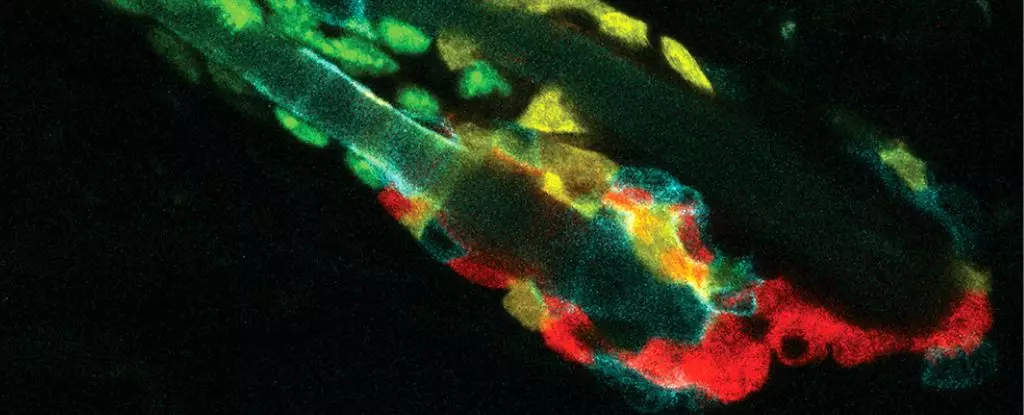Cellular life is an intricate web of processes happening continuously within our bodies, with a staggering rate of cellular death occurring every moment. For every second that ticks by, approximately one million cells succumb to their fates, sparking a critical question: what happens to all that cellular waste? Recent research unveils a rather extraordinary cleanup method that underscores a form of biological cannibalism. In a fascinating twist, living stem cells appear to consume their deceased neighbors, fundamentally altering our understanding of cellular interaction and maintenance.
At the heart of this discovery are two types of receptors located on hair follicle stem cells (HFSCs) that play a crucial role in identifying and responding to cellular death. Researchers from The Rockefeller University, including cellular biologist Katherine Stewart, have found that these receptors are finely tuned to discern between the ‘smells’ of dying and healthy cells. The process begins when the cellular denizens detect the subtle signals released by dying cells. More specifically, one receptor responds to a lipid secreted by the dying cell, acting as a “distress signal,” while the other receptor is attuned to retinoic acid, which is released by healthy cells.
This dual signaling mechanism fosters a highly efficient cleanup system. Stewart highlights the elegance of the design: “It’s so simple yet beautifully controlled.” The cellular ‘first responders’ in this scenario are intriguingly the HFSCs themselves, which exhibit the ability to “eat” their deceased counterparts, underlining a transformative aspect of their functionality. Instead of waiting for immune cells such as macrophages to intervene, dying HFSCs signal their neighbors, triggering them to act quickly and effectively.
The implications of this process reach deep into understanding cellular health and longevity. By consuming their dead neighbors, HFSCs minimize the potential for inflammation that could arise if immune cells were to take over the cleanup process too late or too aggressively. Stewart notes that this behavior protects the stem cell community from the detrimental impacts of an overreactive immune response, ensuring that cellular integrity is maintained. It’s a self-sustaining method of management that empowers these stem cells to support one another in sustaining the overall stem cell pool in the hair follicle.
Elaine Fuchs, another prominent researcher at Rockefeller University, elaborates on the potential energy recycling that could result from this cellular consumption. As HFSCs clear away the debris of dead cells, the nutrients could be harnessed to fuel ongoing cellular processes. However, the urgency of this consumption is evident; once cleanup is complete, HFSCs must swiftly revert to their original roles in maintaining the hair follicle, including producing hair and supporting dermal health.
While this remarkable phenomenon has been prominently observed in mouse hair follicles, researchers speculate that such mechanisms may extend beyond this specific tissue. The ability of stem cells to rapidly detect and manage cell death could be a common multifunctional response across various tissues in mammals. Such findings prompt a deeper inquiry into the general principles governing cellular interactions and responses to death, which could revolutionize our understanding of tissue regeneration, immune response, and even the management of diseases characterized by cellular dysfunction.
As we unearth these biological secrets, the implications stretch far beyond basic science. This research could pave the way for innovative therapies aimed at enhancing tissue regeneration, particularly in conditions where cell death is prevalent, such as in aging or diseases like cancer. Understanding the intricate dance between cellular life and death opens doors to potential breakthroughs in regenerative medicine and cellular therapies.
The discovery of hapless, dead stem cells being consumed by their living counterparts paints a bold picture of life intertwined with death, revealing how living beings navigate the complexities of cellular existence. The ongoing exploration of these dynamics promises a richer understanding of biology, physiology, and potential avenues toward medical advancement.


Leave a Reply